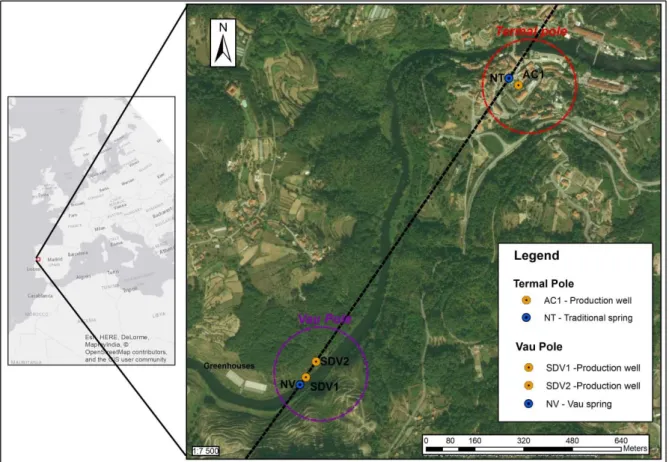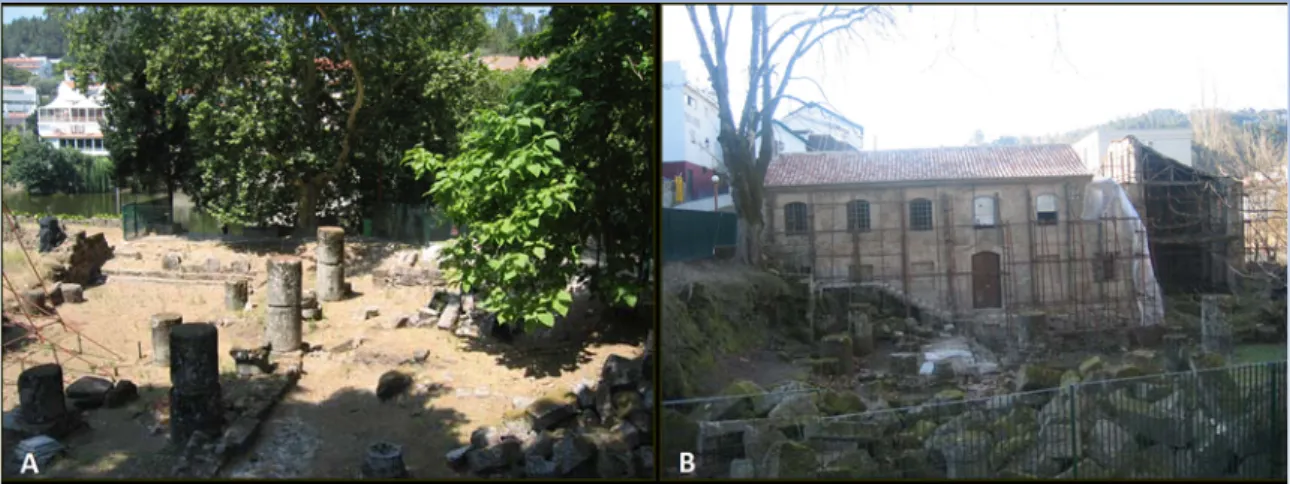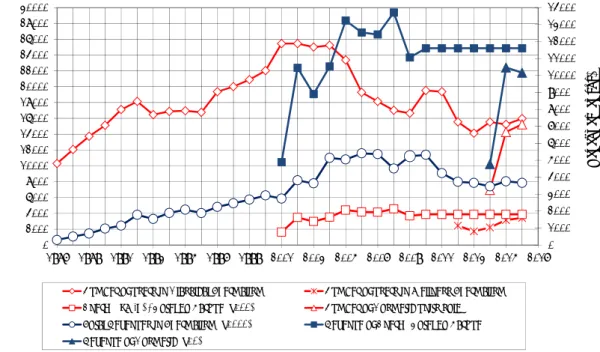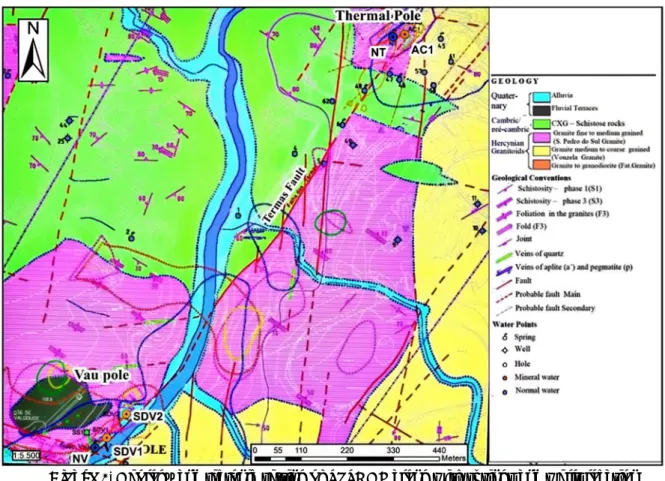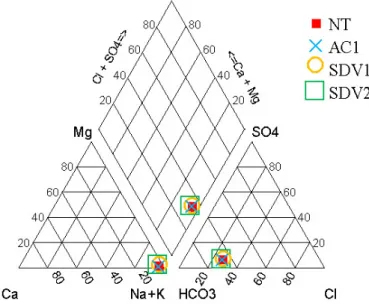1
Content from this work may be used under the terms of theCreative Commons Attribution 3.0 licence. Any further distribution of this work must maintain attribution to the author(s) and the title of the work, journal citation and DOI.
Published under licence by IOP Publishing Ltd
1234567890
World Multidisciplinary Earth Sciences Symposium (WMESS 2017) IOP Publishing IOP Conf. Series: Earth and Environmental Science 95 (2017) 022018 doi :10.1088/1755-1315/95/2/022018
Reservoir Considerations and Direct Uses of São Pedro do Sul
Hydromineral and Geothermal Field, Northern Portugal
L. M. Ferreira Gomes 1,4, A.P. Neves Trota 2,4, A. Sousa Oliveira 3,5, S. M. Soares
Almeida 1
1 University of Beira Interior, Dep. of Civil Eng. and Architecture, 6201-001 Covilhã,
Portugal
2 University of Açores, Department of Geosciences, 9501-801 Ponta Delgada,
Portugal
3 University of Trás-os-Montes e Alto Douro, Quinta de Prados, 5001-801 Vila Real,
Portugal
4 GEOBIOTEC, Univ. of Aveiro, Campus Universitário de Santiago, 3810-193
Aveiro, Portugal
5 SEMMPRE Univ. of Coimbra, Pinhal de Marrocos, 3030-788, Coimbra, Portugal
antonio.pn.trota@uac.pt
Abstract. São Pedro do Sul Hydromineral and Geothermal Field, located in the northern interior zone of Portugal (Lafões zone), has the greatest widespread utilization of geothermal energy in Portugal mainland and is the most important thermal centre from the economical revenues point of view, obtained from direct and indirect utilization of the thermal water, mostly for wellness, health, and leisure of human beings. Recent utilization includes district and greenhouses heating and even cosmetic applications. The Hydromineral Field includes two exploitable zones: the Termas and Vau Poles. The waters are recognised for their mineral and medicinal effects, since the time of the Romans about 2000 years ago and, later on, on the 12th century, by the first King of Portugal, D. Afonso Henriques. The traditional spring and the 500 m well (AC1), located in the Termas Pole, currently supplies artesian hot water flow of about 16.9 L/s with a temperature of 67 ºC. Despite the low flow rate of the actual two exploration wells drilled in the Vau Pole, the geothermal potential is high; a new deep well is planned to be drilled in this zone where is expected to obtain fluid temperature of around 75 ºC. The occurrence of São Pedro do Sul mineral water, included in the sulphurous type waters, are linked to Hercynian granitoids, emplaced between 290 and 321 Myr. There is a close relationship between the placement of the main hot springs and the Verin-Chaves-Penacova fault, namely Verin (Spain), Chaves, Moledo, and S. Pedro do Sul (Portugal) hot springs. Heat flow generated at shallow crustal zones by the radiogenic host mineral of the granitic rocks, added to the deep Earth heat flow, heats the cold water inflow along fractures. Open fracture network along the main faults allows the hot fluids reach the surface, thus giving chance to the occurrence of hot springs and mineralized cold springs. Coupling between fracture opening and density difference between cold water inflow and hot water upflow is assumed to be the main driven factors that explain the occurrence of hot spring in regions with normal to slightly abnormal geothermal gradient. Actual thermal output of the captured fluid in the São Pedro do Sul Hydrothermal area is not fully used, namely in summer times. Thus the main focus for the concessionary includes the saturation of the actual Termas heat power capacity either in the SPA utilization and expansion for newer users in the district heating system. Further studies must be conducted in order to ascertain for possible source deep exploitation to refine
2 1234567890
World Multidisciplinary Earth Sciences Symposium (WMESS 2017) IOP Publishing IOP Conf. Series: Earth and Environmental Science 95 (2017) 022018 doi :10.1088/1755-1315/95/2/022018
quantitatively the São Pedro do Sul reservoir conceptual model in order to make sustainable wise management of this important natural resource, critical for the São Pedro do Sul municipality development and also contributing for the Portuguese sustainable economic growth. In this paper we give new insights for the knowledge of São Pedro do Sul Hydromineral and Geothermal Field, namely the geothermal reservoir, the concession hot water exploitation and future perspectives for upcoming sustainable developments of this valuable natural resource.
1. Introduction
The São Pedro do Sul Hydromineral and Geothermal Field (SPSHGF), close to 1.5 km2 of area,
located northern of Portugal, is a concession zone for mineral water exploitation. The SPSHGF has two poles, or zones, aiming the exploitation of natural mineral hot water: the Termas Pole (TP) and Vau Pole (VP). These poles distance each other by approximately 1.2 km (Figure 1).
Figure 1. Location of the São Pedro do Sul Hydromineral and Geothermal Field: Termas and Vau
poles. The figure also includes the Tradicional Spring (Termas Pole), the Vau Spring (Vau Pole) and the wells AC1, SDV1, and SDV2
In the Termas Pole there are currently two bathhouses in operation, for hydro medicinal treatments, and a District Heating System, which captures heat form the mineral water for direct uses as space and domestic water heating. In Vau Pole the exploited mineral water is harnessed for greenhouses heating aiming the production of tropical fruits.
The natural mineral hot water of the Termas Pole, naturally flowing from rocky outcrops at 69 ºC, has been used for medicinal treatments at least since the time when the Romans occupied the Iberian
3 1234567890
World Multidisciplinary Earth Sciences Symposium (WMESS 2017) IOP Publishing IOP Conf. Series: Earth and Environmental Science 95 (2017) 022018 doi :10.1088/1755-1315/95/2/022018
Peninsula (see ruins of a very old health-resort on Figure 2.A). The medical SPA had greater or minor importance throughout the time according to politic decisions and human necessities. The SPA received special attention at the birth of the Portuguese kingdom, where the first King of Portugal, D. Afonso Henriques, after being seriously wounded in the Badajoz battle, came to the SPA for successful health recovery. By cure compensation, he ordered to raise a hospital at the local, where still remain some building wall ruins to signalize the place (Figure 2.B).
Figure 2. The photos give evidences of an old swimming pool of Roman SPA (about 2000 years old)
and ruins of the first King of Portugal SPA (about 1150 years old) in the SPSHGF. A – Ruins of Roman SPA. B – Ruins of King D. Afonso Henriques
Most probably, the SPSHGF area was occupied by humans in the last glaciation maximum, occurred about 20000 years ago, due to the presence of archaeological vestiges found near the traditional thermal spring [1]. The hot water may have attracted the surroundings communities, which might be used the hot source for heating purposes of a large hut. The mineral water licence of São Pedro do Sul Termas (Medical SPA) are being used for therapeutic purposes since 02-22-1910. Currently, the Medical SPA of S. Pedro do Sul comprises two bathhouses (King D. Afonso Henriques Building and the Queen Dona Amélia Building) operating simultaneously throughout the year; the bathhouses have great physical proximity, being separated by a street (Figure 3).
Figure 3. The photos show two Medical SPA bathhouses on the SPSHGF. A – King D. Afonso
4 1234567890
World Multidisciplinary Earth Sciences Symposium (WMESS 2017) IOP Publishing IOP Conf. Series: Earth and Environmental Science 95 (2017) 022018 doi :10.1088/1755-1315/95/2/022018
The number of SPA users in classical thermalism over the past 25 years stands between 14000 and 25000 per year (Figure 4), which correspond to about 25% of all the Portuguese SPA users. Classic thermalism in Portugal involves users in the medical SPA for 2 weeks period. The routinely treated illnesses include the rheumatic diseases and the respiratory tract. The physiotherapy medicine domain, recently introduced, includes the use of electromagnetic radiation as electrotherapy, magnetic therapy, and phototherapy. In 2004, new Portuguese legislation [2] allowed the use of Medical SPA in wellness situations without the need of medical prescription, permitting the users to stay for short periods of time inside the medical SPA.
Since 2011 the Medical SPA of S. Pedro Sul produces cosmetic products from the mineral water. The cosmetic products (body cream, face cream, massage oil, cleaning gel, and vaporizer) represent an important revenue source for the São Pedro do Sul municipality (Figure 4).
Figure 4. The graph presents the yearly evolution of users and respective revenues from the SPSHGF:
Thermalism users (classical and wellness); energy consumed in the Parque Hotel; Cosmetic Product units sold; and revenues (Hotel do Parque, thermalism, and cosmetic)
The legal authorization for geothermal use of the mineral water produced in the SPSHGF on both the District Heating System (TP) and greenhouse heating (VP) was given in 1997 for the first time in Portugal [3].
The District Heating System (DHS) in Termas Pole uses the geothermal energy for space and domestic water heating purposes, transferring heat from the mineral water to secondary and tertiary circuits of low mineralized water by means of heat exchangers. The most important user, the Hotel do Parque building, utilizes the heat for space and domestic heating for almost 15 years, without major interruptions. The mineral water used under the DHS lowers the temperature from 67 ºC for 40 ºC, keeping unaltered the chemical water properties for use in the Medical SPA.
In the Vau Pole, the flow of 1.5 L/s of water at 67 ºC produced from well SDV1 are being used for greenhouse heating, where bananas and pineapples are being cultivated.
0 1000 2000 3000 4000 5000 6000 7000 8000 9000 10000 11000 12000 13000 14000 0 2000 4000 6000 8000 10000 12000 14000 16000 18000 20000 22000 24000 26000 28000 30000 1987 1989 1991 1993 1995 1997 1999 2001 2003 2005 2007 2009 2011 2013 2015 2017 R ev enues (eur os ) Num b er u sers/ uni ts /e nergy
Number of users in Classical Thermalism Number of users in Wellness Thermalism Energy (kW/h) - Hotel do Parque (x100) Number of Cosmetic units sold Total Revenues in Thermalism (x1000) Revenue of Energy Hotel do Parque Revenue of Cosmetic (x10)
5 1234567890
World Multidisciplinary Earth Sciences Symposium (WMESS 2017) IOP Publishing IOP Conf. Series: Earth and Environmental Science 95 (2017) 022018 doi :10.1088/1755-1315/95/2/022018
2. Geological setting
The occurrence of São Pedro do Sul thermal water, included in the sulphurous mineral waters, are linked to Hercynian granitoids, emplaced between 290 and 321 Myr. According Pereira and Ferreira [4], the granitic rocks in the São Pedro do Sul zone are: Pre-orogenic granitoids (540–490 Myr), Cambrian period, showing all stages of the Hercynian deformation. Syn-to tardi-orogenic granitoids (380–290 Myr) which include granites from D1 and second D2 stage of deformation (before D3) and the Hercynian phase (D3) (syn-D3 granitoids). Post-orogenic granitoids (<290 Myr) which were emplaced in the Carboniferous and Permian terminal periods that are related to brittle fracturing tardi-hercynian phase. The geological framework of the study area is shown in Figure 5. Locally, there are the following geological units: Unit 1- Precambrian/Cambrian; constituted by schistose rocks, mainly schists and metagraywackes; Unit 2 - Hercynian Granitoids, with subunit 2.1. Vouzela granite (monzonitic granite medium to coarse grained, formed mainly by quartz, albite-oligoclase, potassium feldspat, biotite and muscovite), subunit 2.2 S.Pedro do Sul granite (granite fine to medium grained, composed mainly by microcline, plagioclase, quartz, muscovite and biotite), and subunit 2.3 Fataunços granite (granite close to granodiorite, fine to medium grained, with two micas); Unit 3 – Quaternary (3.1 Pleistocene: fluvial terraces, mainly with gravel; 3.2. Holocene: alluvia, mainly with sand and gravel).
The main tectonic accident that crosses the São Pedro do Sul terrains are the NNE-SSW Verin-Chaves-Penacova fault (VCP), with development in the Ribama valley in the SPSHGF zone. This fault origin backs to the Hercynian orogeny and have been reactivated by intense neotectonic activity (last 2 Myr), originating a complex pattern of faults in the area. The present regional tectonic stress field indicates maximum horizontal compressive stress trends NW-SE to WNW-ESE. There is a close relationship between the placement of the main hot springs and the VCP fault, namely Verin (Spain), Chaves, Moledo, and S. Pedro do Sul (Portugal).
3. Hydrogeology
The shale and granite rocks often present fracture permeability. According to A.Cavaco [5, 6], the AC1 well tests interpretation gave evidences of a confined aquifer with the following aquifer parameters, assuming a 200 m aquifer thickness: transmissivity, 1.3*10-3 m2/s; storage coefficient,
4.3x10–5; hydraulic conductivity, 5.8*10-6 m/s. The natural water flows mainly along the Termas Fault
(Figure 5).
The first conceptual model for the S. Pedro do Sul region that explain the origin of the hot mineral water of SPSHGF was advanced by Haven et al. [7], as outlined in Figure 6. Recharge of cold water from the surroundings areas, namely in the Ribama area, infiltrates through the fracture network, as the VCP fault, to deep zones. The high geothermal gradient of this area due to the presence of granitic rocks heats up the down flowing percolating water and the mineral exchange, thus increasing water mineralization. The density difference of cold water inflow and the upward hot flow, along with open hydraulic circuits due to fracture and faults intersections, namely the Termas Fault, oriented NE-SW, with fault WNW-ESE (Figure 5), are considered the driven mechanisms for the hot springs occurrence.
Recent isotopic studies [8] on the produced mineral water points out to a recharge zone at higher altitudes than that given by Haven model. The O and H isotopic ratios indicate that the water source were mainly originated from meteoric water at altitudes higher than 1000 m, with no significant evaporation before infiltration, suggesting a recharge area in the São Macário Mountain, located NW of SPSHGF, exactly the opposite site of Ribama zone. Additional research is needed to clear understand the recharge, heating process, and the upflow mechanism of the SPSHGF.
6 1234567890
World Multidisciplinary Earth Sciences Symposium (WMESS 2017) IOP Publishing IOP Conf. Series: Earth and Environmental Science 95 (2017) 022018 doi :10.1088/1755-1315/95/2/022018
Figure 5. Geology and tectonic setting of SPSHGF along with springs and wells location
Figure 6. Hydrothermal model of S.Pedro do Sul mineral water proposed by Haven et al. [7].
In order to protect the resource from contamination, according to the law, Ferreira Gomes et al. [6] delimited three protection zones: a) immediate zone - the most vulnerable protection area; protects the discharge zone of the natural mineral water for medicinal purposes; covers an area of 10000 m2; b)
intermediate zone - includes all areas surrounding the previously mentioned discharge zones in order to protect the mineral aquifer and even other non-mineral aquifers which might interfere with the mineral water circuit; covers a total area of 1570000 m2; c) distant zone - the area intended to protect
the recharge zones, so that any eventual contamination does not reach the hydromineral circuit in dangerous concentrations; covers a total area of 9790000 m2.
The mineral water abstraction in the Termas Pole includes an ancient spring (Traditional Spring, NT), known at least since the Roman empire, and the AC1well, completed in 1997. The hot spring upflows from a fractured granite outcrop (1.6 m to 1.6 m), inside a small granite brick masonry house
7 1234567890
World Multidisciplinary Earth Sciences Symposium (WMESS 2017) IOP Publishing IOP Conf. Series: Earth and Environmental Science 95 (2017) 022018 doi :10.1088/1755-1315/95/2/022018
dated from 1639. The mineral water is piped to a two intermediate stainless steel reservoirs (buffering system) and then to the Thermal Power Plant, and later on to the Medical SPA.
The well AC1, located about 20 m east of traditional spring, was deviated drilled from 11-12-95 to 02-28-97, reaching to a 500 m depth. The well dips, in average, 80º; S70W, and crosses mostly granitic rocks. The well was completed with 8 diameter stainless steel production casing, AISI 316, from wellhead to 46.5 m depth; this section is properly cement insulated from wellhead to 59.7 m depth; from 59.7 to 500 m depth the section is open hole: HQ diameter (90 mm) up to 260.8 meters and up to well bottom with NQ diameter (46 mm). Well AC1 under shut-in conditions, the NT water flow is about 10 L/s, being constant for at least 25 years. Under stabilized conditions, with valve fully open, the artesian water flow from AC1 well is 12.2 L/s, thus reducing the NT flow in the NT to 4.7 L/s (Figure 7), totalizing 16.9 L/s.
In the Vau Pole (Figure 5) occur a thermal spring with small flow rate and variable temperature. On this Pole, two wells were drilled, SDV1 and SDV2, completed in 1991, with depths of 216 m and 151 m, respectively. The wells were located based on explorations studies which point out for target zone along the orientation 75º; 45ºW. The drilling crossed granite rocks. Both SDV1 and SDV2 were completed: from wellhead to 30 m depth with 6 diameter stainless steel casing; from 30 m depth to bottom hole with HQ diameter (90 mm). SDV1 produces artesian flow of 1.5 L/s for greenhouse heating, from October to March, for pineapples and bananas cultivation.
4. Water geochemistry
Charles Lepierre [9] first analyzed the NT water chemistry. From 1985 on the NT was subjected to systematic and complete physical and chemical parameters analysis. Based on Ferreira Gomes et al. [6] and Almeida et al. [8, 10], we present (Figure 7) the analytical data (40 samples for NT, 42 samples for AC1, 18 samples for SDV1, and 18 samples for SDV2) carried out between 2005 and 2013. The Piper diagram plotting outlines a classification for the mineral being exploited in the SPSHGF area as bicarbonate-sodium type waters. Another classification includes this type of water as sulphurous, displaying a complex chemical composition, presenting pH above 8.0, high relative concentrations of fluoride and silica, and the presence of sulphur with a typical "rotten eggs" smell. Those waters have a total mineralization of about 370 ppm and non-ionized silica content in the order of 70 ppm.
Figure 7. Water chemistry representation of the springs and wells in the SPSHGF. NT – Termas hot
8 1234567890
World Multidisciplinary Earth Sciences Symposium (WMESS 2017) IOP Publishing IOP Conf. Series: Earth and Environmental Science 95 (2017) 022018 doi :10.1088/1755-1315/95/2/022018
5. Geothermal potential and environment
Based on a resource temperature (spring and well) of 67 ºC, a rejection temperature of 20 ºC and a total fluid flow of 18.4 L/s we estimate a yearly available energy in Termas and Vau Pole as 29.1*106
kWh and 2.6*106 kWh, respectively. Energy consumption in SPSHGF concession can be obtained
from published papers of Ferreira Gomes [3] and Afonso de Albuquerque [11]. According to Ferreira Gomes [3], hotter fluid exploitation up to 15-18 L/s can be obtained if drilling goes deeper.
Based on silica geothermometers [12] the temperature of SPSHGF reservoir is in the range of 116 ºC to 121 ºC for isentropic conditions whereas for adiabatic conditions the range is from 117 ºC to 123 ºC, thus much lower figures than Heaven [7] estimation. Thus, assuming a reservoir temperature of 120 °C, and admitting a simple linear geothermal gradient of 33 ºC/km and an average air annual temperature of 12 °C, we estimate a reservoir depth of 3273 m. Yet, and because the geothermal gradient must be somewhat higher in granite zones, we speculate for a reservoir depth upper positioned, at a depth lower than 3000 m.
Based on the actual yearly direct use energy utilization on the District Heating System of 0.456*106
kWh, and by making comparison with theoretical consumption of propane gas, the annual CO2
emissions is reduced to about 117.9 ton.
The mineral water use in the Medical SPA, the cascade geothermal energy uses in Termas Pole, and the greenhouse heating in Vau Pole are greatly contributing to the economy of São Pedro do Sul region, particularly to the municipality, turning user’s life healthy and reducing CO2 gas emissions by
utilizing local natural resources in a sustainable way.
6. Future development and conclusions
Actual thermal output of the captured fluid in the SPSHGF is not fully used, namely in summer times. Thus the main focus of the SPSHGF includes the saturation of the actual Termas Pole heat power capacity factor to upper numbers, both in the balneary utilization and in the expansion for newer users in the district heating system. Despite the low flow rate of the actual two exploration wells drilled in the Vau zone, the geothermal potential is high; a new deep well is planned to be drilled in this zone in order to obtain fluid temperature of around 75ºC.
Based on previous considerations the reservoir source power may be considerably higher, both in fluid temperature and exploitable source volume. Further studies must be conducted in order to ascertain for possible source deep exploitation to refine quantitatively the SPSHGF conceptual model in order to make sustainable wise management of this important natural resource, critical for the São Pedro do Sul municipality development and also contributing for the Portuguese sustainable economic growth.
Acknowledgements
The authors would like to thank the Câmara de São Pedro do Sul and GEOBIOTEC (UA) and SEMMPRE (UC) for the support and facilities given.
References
[1] A. P. S. Carriço, “Metamorfoses do espaço termal. O caso das Termas de S.Pedro do Sul,” Tese de
Doutoramento em Arquitetura; Universidade da Beira Interior; Covilhã, 345p.,
http://hdl.handle.net/10400.6/4409, 2013.
[2] Decreto-Lei nº 142/2004 de 11 de Junho, “Lei das Termas”, Diário da República- I Série-A, nº136 -11, pp.3632-3640, 2004.
[3] L. M. Ferreira Gomes, “Aproveitamento Geotérmico em Cascata em São Pedro do Sul", Boletim
de Minas, 42 (1). DGEG - Direcção Geral de Energia e Geologia, Lisboa. ISSN 00008 5935,
pp.5-17, 2007.
[4] E. Pereira, and N. Ferreira, “Geologia regional e controlo estrutural das nascentes termais de S. Pedro do Sul”, Comun. Serv. Geol. Portugal, T. 71, fase 1, pp. 17-25, 1985.
9 1234567890
World Multidisciplinary Earth Sciences Symposium (WMESS 2017) IOP Publishing IOP Conf. Series: Earth and Environmental Science 95 (2017) 022018 doi :10.1088/1755-1315/95/2/022018
Vol. I e II. Relatório Interno. Termas de S. Pedro do Sul (in Portuguese), 1995.
[6] L. M. Ferreira Gomes, F. J. A. Albuquerque and H. Fresco, "Protection areas of S.Pedro do Sul Spa, Portugal", Elselvier, Engineering Geology, Vol. 60 – Nos.1-4. pp.483-490, 2001. [7] H. Haven, R. Konings, M. Schoonen, J. Jansen, S. Vriend, C. Van Der Weijden and J. Buitenkamp,
"Geochemical Studies in the Drainage Basin of the Rio Vouga (Portugal): II. A Model for the Origin of Hydrothermal Water in the Vouzela Region", Chemical Geology, 51, p. 225-238, 1985.
[8] S. M. S. Almeida, L. M. Ferreira Gomes, A. Sousa Oliveira and P. M. Carreira, "Application of hydrochemistry and stable isotopes in the study of São Pedro do Sul thermomineral system (north of Portugal)", 2nd International Interdisciplinary Conference on Mineral Waters. Vila
de Luso, Portugal 26th – 31st March, 2 p, 2017.
[9] C. Lepierre, 1867-1945 - Termas de São Pedro do Sul: estudos físico-químico, quimicas, bacteriológico / Charles Lepierre. - Lisboa: of. da Soc. de Public. do Museu Comercial, 1929. - 29 p.; 22 cm. BN S.A. 10702//17 V.
[10] S. M. S. Almeida, L. M. Ferreira Gomes, P. E. M. Carvalho and A. Sousa Oliveira, "Contribuição para o conhecimento da hidroquímica do sistema aquífero termomineral de São Pedro do Sul (N de Portugal)", Comunicações Geológicas, 102, Especial I, 125-128, 2015.
[11] F. Albuquerque, L. M. Ferreira Gomes and A. Miranda, "Utilization of Geothermal Energy in a Hotel in São Pedro do Sul – Portugal", Proceedings of the International Conference on
Civil Engineering (Towards a Better Environment) - CE13. Published by CI - Premier PTE LTD, Singapure, ISBN: 978-981-07-6066-3. pp. CE - 77 - CE86, 2013.
[12] L. Aires-Barros, "Termometria geoquímica. Princípios gerais, aplicações geotérmicas a casos portugueses", Com. Serv. Geol. Port., T. LXIV, pp.103-132, 1979.
